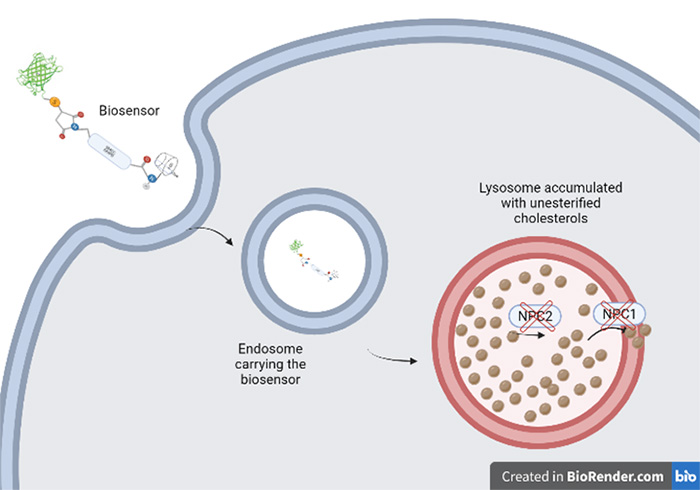Profile

Nationality : Sri Lankan
Keywords : Green Fluorescent Protein Biosensors, Fluorescent Resonance Energy Transfer(FRET),Beta-Cyclodextrin, Lysosomal Disorders, Niemann-Pick Disease Type C
Research advisor : Prof.Dr. Miho Suzuki
Why I entered GSC program
Green Fluorescent proteins (GFP) which emit green glow were first extracted from jellyfish but, at present there are different types of genetically engineered GFP mutants that can be used in a wide array of researches. GFPs have been popular in construction of biosensors because they have fluorescence detection. Fluorescence Resonance Energy Transfer (FRET) is a technique that can be incorporated in GFP biosensors. Hence, FRET based GFP biosensors are effective in sensing different cellular processes and dynamics of biochemical compounds. Through GSC Program I am learning about constructing FRET based GFP biosensors which can be used clinically in disease detection and therapeutic treatments. I am being really grateful for having this opportunity because the exposure to new subjects and naval technology is very valuable.
Research title
Development of FRET based GFP biosensor which detects cholesterols localized in lysosome
Research abstract
There are different types of lysosomal disorders which happen due to accumulation of undegraded metabolites and their intermediates in the lysosome. The popular causes for these disorders are gene mutations in lysosomal enzymes, non enzymatic lysosomal proteins, and its membrane proteins. Niemann-Pick disease type C is one of such disorders which happens due to lysosomal accumulation of unesterified cholesterols and is considered as a rare genetic disorder which can happen in all ethnic groups. NPC1 and NPC2 are main proteins which aid in directing unesterified cholesterols out of the lysosome towards the Endoplasmic reticulum. Mutations in the genes responsible for either of above proteins is the so far understood major cause for Niemann-Pick disease type C. Various therapeutic strategies have been proposed in the treatment of this disease and among them usage of cyclodextrins is very popular. Green Fluorescent proteins are very popular in building FRET (Fluorescence Resonance Energy Transfer) based biosensors and they can be used in the detection of different cellular processes and even can be used as therapeutic modes to deliver treatments. The scope of the present study is to build a FRET based GFP sensor incorporating an inclusion complex built by inserting a dye inside the hydrophobic cavity of beta cyclodextrin. Due to high affinity of cholesterol towards beta cyclodextrin the cholesterol can replace with the dye. FRET based detections are carried out in analysis. The biosensor's cellular uptake happens through endocytosis and is beneficial in targeting the lysosome.Therefore this biosensor may have efficacy in detecting Niemann-Pick disease type C and can have potential in delivering treatments for the disease.
Graphical abstract




